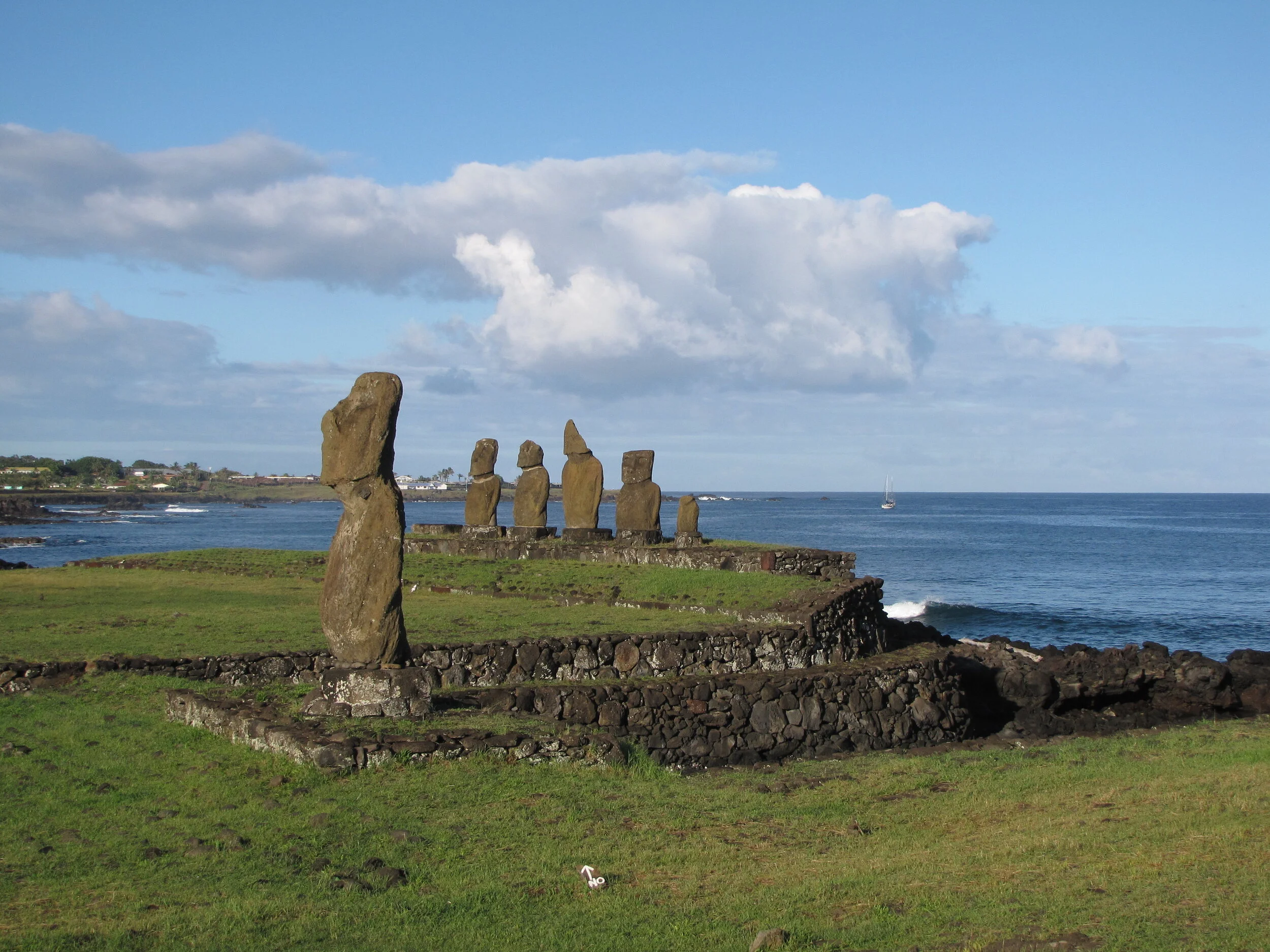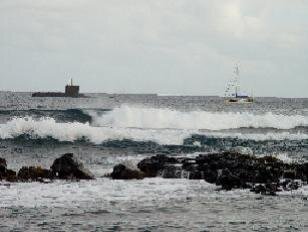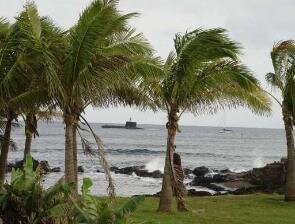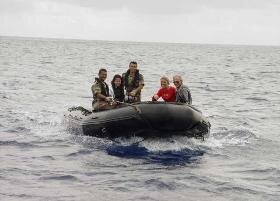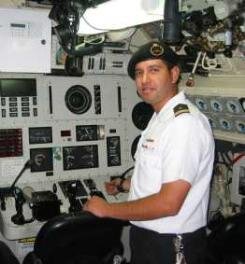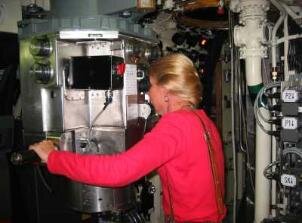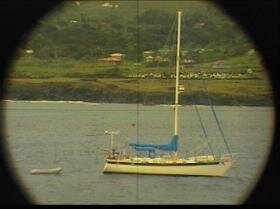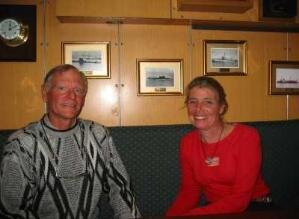Easter Island… Rapa Nui - Home of the Moai
2,300 miles west of Chile in the South Pacific lies Easter Island. Governed by Chile since 1888, Easter Island is one of the world's most isolated inhabited islands and the farthest point east in Polynesia. Its Spanish name is Isla de Pascua and its Polynesian name is Rapa Nui. The original inhabitants called their land Te Pito o Te Henua, 'the navel of the world'.
Easter Island Facts:
Land area: Only 47 sq. miles
Population: 3,800
Language: Spanish and Rapanui
Capital: Hanga Roa (this is also the designated
anchorage area on approach)
High Point: 1,664.73 ft (507.41 m) on Ma′unga Terevaka, an extinct volcano
Currency: Chilean peso (600 = $1 US)
Jacob Roggeveen, a Dutch explorer, was the first European to visit on
Easter Sunday 1722. Archeological evidence indicates discovery by
Polynesians about 400AD.
Easter Island - 2004
We have visited Easter Island twice. Our first trip to Easter was a voyage from the Galapagos Islands to Easter Island in 2004. The 2,000 nm passage took about 19 days. We were ready for terra firma by the time we arrived at Easter Island.
Hanga Roa - 27S08.57/109W26.015 in 53 ' of water
This was the first time we had ever
taken crew aboard Nine of Cups.
John Santic, a sailing friend from
the USA, sailed with us from
Ecuador to the Galapagos and on
to Easter Island. Take a look at John’s website here.
Ahu Tahai - A path along the shore led through
a grassy meadow and up a knoll to the 5 moai
we had seen from the boat on approach. This raised
area called a Tahai, represents the best restored
archeological center near the city of Hanga Roa.
You can barely see Nine of Cups peeking through the two moai furthest to the right.
After wandering around town and being the only sailboat at Easter for over a week, the Armada notified us one afternoon to expect company in the anchorage, a Chilean submarine. We were surprised when they anchored close and that they had to anchor just as we did.
Much to our surprise, we were invited aboard the Chilean submarine Simpson. They sent an Armada launch to pick us up and bring us back to Cups. Since the local law requires that someone remain on the boat at all times, John remained while we went aboard and then went for his tour separately a bit later. Jean Paul Chassin Trubert was our gracious host aboard the Submarino Simpson. He gave us an extensive tour of the sub, let us try out the periscope, fed us ice cream and gave us two bottles of fine red Chilean wine as a gift. They also provided us with a disk copy of the periscope view of Nine of Cups. They were carrying three torpedoes we were told, but none were aimed at us. Whew! We cannot say enough about the courtesy and professionalism of the Chilean Armada.
While making a trip to the Port Captain's office, we ran into the Rapa Nui warriors who had provided the welcome dance aboard the Simpson. Marcie lost no time in making their acquaintance.
"Cups" loved the calm anchorage on the north side of the island at Anakena as much as we did. She deserved a rest after the strain of a 2,000 mile passage from the Galapagos. After a fresh rain shower wash down, stainless cleaning and some varnishing, she was standing proud and resting peacefully as we, along with lots of tourists, photographed her from the shore.
Anakena anchorage - 27S04.265/109W19.47 in 18'
Rano Raraku is called the moai nursery, the
quarry in which the moai were carved "in situ".
The view of all the moai on the hillside was
magical. We wandered a well worn footpath midst
half-carved moai and toppled parts. There were
about 300 moai in different stages of development.
Ahu Nau Nau - This ahu was restored in 1980 by a
Rapanuian archeologist, Sergio Rapu Haoa. It is one of the best preserved ahus since it was discovered totally buried in the sand. Five of the seven moai have pukaos, reddish topknots which sit atop their heads. The complete ones are about 20 feet high and each looks unique.
Marcie admires a lone moai at the entrance to the Tongariki site near the Hutu Iti anchorage -
Hutuiti anchorage - 27S07.80/109W16.25 in 30' of water
John left us at Easter after touring the island a few days longer and then he flew home. We returned to Ecuador, or rather we limped back to Ecuador with engine problems. This passage, our longest voyage at sea at that date, took 29 days and we were only too glad to tuck into our berth at Puerto Lucia Marina in La Libertad, Ecuador.
Easter Island Revisited - 2009
On our trans-Pacific crossing in 2009, we returned to this exotic island for another visit and more exploring. Things had changed. On our previous visit, one crew member had to remain aboard at all times. Now, in settled weather and with the permission of the Capitania, the crew could go ashore together if they monitored Channel 16 with a VHF. Additionally, one mooring had been installed off Hanga Roa for use by visiting yachties and, since we were the only sailboat in town, we were lucky enough to use it. We were hoping to do all those things we hadn’t had a chance to do last time plus revisit some of the sights that so enthralled us on our first visit..
There was very little drama (that's good) on our trip from Juan Fernandez to Easter. It was warm. We did see white-tailed tropic birds en route. David counted squid on deck and in the scuppers each morning, but three was the high total for any given day. We dragged a fishing line, but caught nothing. There was little wind. All in all, it was pretty pleasant, but slow.
The total trip mileage was 1,735 nm in 15 days... certainly no speed records. As always, the first glimpse of land after a couple of weeks at sea is exciting.
With a southwest wind blowing, we opted to anchor the first night on the north side of the island at Anakena, which just happens to be our favorite spot on the island... and obviously a favorite spot for lots of beach-goers as well.
An old cement wharf provided a handy place to tie up the dink when we went ashore.
A view of Cups through the volcanic boulder breakwater near the dinghy dock.
We stayed aboard the first night and went ashore early the next morning and had the place all to ourselves. It's mystical, magical and seems sacred.
Above, Ahu Nau Nau in the morning sun faces away from the water and inward towards the island as do all the moai, except one. Moai were erected as a form of ancestor worship.
One of the many positives about visiting again is that we already knew several of the key spots for best photo opps and this was our favorite.
Anakena is part of the Chilean national park system and a stand of palms provides a beautiful picnic and camping area.
Ature Huki, erected by Thor Heyerdahl and crew, stands alone and solemn, his only company the ever-present cara cara, falcon-like, predatory birds that heavily populate the island.
Hanga Roa Anchorage - 27S08.69 / 109W26.13
We needed to check in with the Chilean Armada and proceeded the next morning to Hanga Roa, Easter Island's only town on the southwest side of the island. Above, Caleta Hanga Roa and its tiny, protected fishing boat harbor is a place to tie up the dinghy safely.
The moai, Hotumatua, greets yachties when they arrive in the Caleta Hanga Roa. Unlike other moai, He faces the sea!
Next to the Capitania's office is the "Compass Rose", a signpost with distances to many cities of the world... all far away.
Surfing is a big sport here and the breakers just in front of Cups were pretty big.
Pleasant, tree-lined Avenida Atamu Tekena offers lots of cafes, boutiques, car rentals and internet.
Ahu Tahai is in the foreground; Ahua Vai Uri hasa five moai in varying degrees of erosion and Nine of Cups peeks from the anchorage in the background.
We had not visited the museum in the past so made it a point to stop this time. It provided lots of info about the island that was new to us. The museum was actually the first stop of a recommended walking tour along the coast north of Caleta Hanga Roa. We enjoyed both the museum and the walk.
One of the major questions about the moai has always been...how did they erect them? There are lots of theories from aliens to cranes. The moai cartoon above cites "mana" (the force) as the easiest way to complete the chore.
The moai above, Ahu Ko Te Riku (whom we named Obsidian Eyes), had coral and obsidian eyes added in the 1990s in an effort to please tourists.
After our museum visit, we continued on our walk along the coast. The cemetery by the sea combined a wonderful fusion of Christian and traditional cultural symbolism. An interesting observation was that several gravesites had benches nearby for family to visit, sit and chat with each other and their dearly departed.
There are more horses per capita on Easter Island than any place we've ever been (including Colorado). They're everywhere, probably more numerous than cars and seem to be free to wander and graze at will.
Horseback is also a major means of transport on an island with few kilometers of roads and lots and lots of green space and hillsides. This rider and horse were as one.
we were blessed with settled weather and light winds from the southwest so decided to rent a car to tour parts of the island we hadn't seen before. As we approached Hanga Piko, the tiny caleta south of us, we were delighted to see masts sticking up over the hill as the moai stood sentry.
A little trivia …Rongorongo is an undeciphered Easter Island script which was carefully inscribed on wooden tablets. No one to date has been able to translate it and the script is not related to any other known form of writing. It is unique to RapaNui.
The reef and rock-ridden entrance to Hanga Piko is shallow, dangerous and requires a pilot. Most of the boats inside were owned by local residents.
At the southwest corner of the island is the Rano
Kau crater (above) and the Orongo ceremonial village, part of the Rapa Nui National Park.
Aguja Roca and Motu Nui in the distance with petroglyphs in the foreground, all instrumental in the annual festivities associated with the birdman cult prevalent here in the18-19th centuries.
Along the coastal road, there are so many moai to stop and view, it's almost overwhelming. Here at Vinapu, many of the statues are toppled, but the stonework above has been compared to that of the Incas.
The Ahu Tongariki was destroyed by a tsunami in 1960 and subsequently restored by a Japanese archeological project.
Marcie posed next to the same guy as last time...he's still taller than she is.
Moai are not quite as tall when they're lying on their Backs.
At the Rano Raraku volcano, over 600 moai and parts of moai are scattered about, half buried or left half-carved "in situ". Fun to roam about, but way too many tourists!
End of the day and pretty much the end of our stay at Easter. We couldn't leave without visiting the Mercado Artesenal and the Feria.
We ended up with a very interesting carved ceremonial paddle (left) which proudly hung on Cups and now adorns our bedroom wall in Las Vegas. We also bought a coffee mug with a traditional "magai" (pronounced mahn-guy) motif (right) and a fish hook particularly associated with good luck. And, of course, we bought the t-shirt!
After 5 days of great settled weather, a low pressure arrived bringing northwest winds and making the Hanga Roa anchorage untenable. By now, two other sailboats had arrived and we all headed to Hutuiti on the east coast to wait it out. The backside views of the 15 moai of tongariki and Rano Raraku were great.
For five more days, we sat and waited for the weather to change and finally the forecast called for south/southeast winds again, but the port of Hanga Roa remained closed due to wind and waves. With S/SE winds, Hutuiti was not a tenable anchorage, so we moved to Anakena again on the north shore. The Chilean Armada, efficient and courteous as ever, came to the cement wharf in Anakena (all services... Immigration, Navy and Customs) where David picked them up in the dinghy and ferried them to the boat. We checked out for Iles Gambier. In actuality, we were heading to Pitcairn Island with hopes that our good luck would hold and we'd be able to stop and go ashore there. And we did! So be sure to visit Pitcairn with us on our Pacific Ocean crossing.

